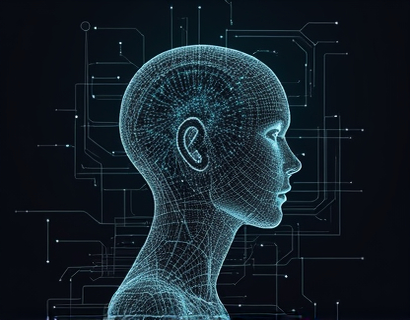Ethereum Layer 2: Scalability and Interoperability Insights for Developers and Enthusiasts in 2025
The Ethereum ecosystem has been at the forefront of blockchain innovation, continuously evolving to address scalability and interoperability challenges. As we step into 2025, Layer 2 solutions have become a critical component in enhancing the network's performance and expanding its capabilities. This comprehensive guide aims to provide developers and enthusiasts with in-depth insights into the latest Layer 2 solutions and scalability updates, ensuring they remain ahead in the dynamic Ethereum landscape.
Layer 2 solutions are designed to alleviate the burden on the main Ethereum blockchain by processing transactions off-chain, thereby reducing congestion and lowering gas fees. These solutions are essential for maintaining Ethereum's position as a leading platform for decentralized applications (dApps) and smart contracts. In this article, we will explore various Layer 2 technologies, their mechanisms, benefits, and how they contribute to the overall scalability and interoperability of the Ethereum ecosystem.
Understanding Layer 2 Solutions
Layer 2 solutions can be broadly categorized into two main types: state channels and sidechains. State channels, such as Lightning Network for Bitcoin and Optimistic Rollups and ZK-Rollups for Ethereum, enable multiple transactions to be bundled and settled off-chain, with only the final state submitted to the main chain. Sidechains, on the other hand, are separate blockchains that are linked to the main Ethereum chain, allowing for parallel transaction processing and asset transfer.
Optimistic Rollups and ZK-Rollups are two prominent state channel solutions on Ethereum. Optimistic Rollups bundle multiple transactions into a single batch, which is then submitted to the main chain. The assumption is that the transactions are valid, and any disputes are resolved through a challenge period. If no challenge is raised, the batch is confirmed, and the transactions are finalized. ZK-Rollups, or Zero-Knowledge Rollups, use cryptographic proofs to verify the validity of transactions off-chain, significantly reducing the data sent to the main chain and enhancing scalability.
Benefits of Layer 2 Solutions
The primary benefit of Layer 2 solutions is improved scalability. By processing transactions off-chain, these solutions can handle a higher volume of transactions per second (TPS), reducing congestion on the main Ethereum network. This leads to lower gas fees, making it more affordable for users to deploy and interact with dApps. Lower fees also encourage more developers to build on Ethereum, fostering innovation and growth in the ecosystem.
Another significant advantage is enhanced user experience. With faster transaction times and reduced fees, users can enjoy seamless interactions with dApps, from decentralized finance (DeFi) protocols to non-fungible token (NFT) marketplaces. This improved user experience is crucial for the widespread adoption of blockchain technology in various industries.
Current Layer 2 Implementations
Several Layer 2 projects are already making substantial impacts on the Ethereum ecosystem. One of the leading Optimistic Rollup projects is Arbitrum, which has gained popularity for its high throughput and low latency. Arbitrum enables developers to build scalable dApps with minimal costs, making it an attractive choice for many projects. Another notable Optimistic Rollup is Polygon (formerly Matic), which has a large developer community and extensive ecosystem support.
ZK-Rollups are also gaining traction, with projects like StarkWare and Loopring leading the way. StarkWare's zk-Rollup offers high transaction throughput and low fees, while Loopring focuses on interoperability and security. These projects are pivotal in demonstrating the potential of ZK-Rollups to scale Ethereum significantly.
Interoperability in Layer 2 Ecosystem
Interoperability is a critical aspect of Layer 2 solutions, as it enables seamless interaction between different blockchain networks and Layer 2 protocols. Interoperability ensures that assets and data can be transferred smoothly between various platforms, enhancing the overall utility and flexibility of the Ethereum ecosystem.
One of the key interoperability solutions is the use of cross-chain bridges. These bridges allow assets to be moved between Ethereum and other blockchains, facilitating liquidity and collaboration across different ecosystems. For instance, Wrapped Bitcoin (WBTC) enables Bitcoin holders to use their BTC on Ethereum, and vice versa, through a bridge that ensures asset integrity and security.
Another important aspect of interoperability is the development of interoperable Layer 2 protocols. Projects like Cosmos and Polkadot are designing frameworks that allow multiple blockchains to interoperate seamlessly. While these frameworks are not exclusively Ethereum-based, they complement the Ethereum Layer 2 landscape by providing a broader interoperable network.
Challenges and Future Directions
Despite the significant advancements, Layer 2 solutions face several challenges. One of the main challenges is the complexity of implementation and integration. Developers need to understand the intricacies of different Layer 2 protocols to build robust and secure dApps. Additionally, the governance and maintenance of Layer 2 networks require careful consideration to ensure long-term sustainability and security.
Another challenge is the need for standardization. The lack of uniform standards across different Layer 2 solutions can lead to fragmentation and interoperability issues. Industry-wide collaboration is essential to establish common standards that facilitate seamless integration and interaction between various Layer 2 protocols.
Looking ahead, the Ethereum community is actively working on enhancing Layer 2 solutions. The Ethereum 2.0 upgrade, which includes the transition to a proof-of-stake (PoS) consensus mechanism, is expected to further improve scalability and security. Additionally, ongoing research into advanced cryptographic techniques and novel consensus algorithms will continue to drive innovation in Layer 2 technologies.
Conclusion
Layer 2 solutions are a cornerstone of Ethereum's scalability and interoperability strategy. By offloading transaction processing to separate layers, these solutions alleviate network congestion, reduce fees, and enhance user experience. As the Ethereum ecosystem continues to evolve, the development and adoption of Layer 2 technologies will play a crucial role in maintaining its leadership in the blockchain space. Developers and enthusiasts must stay informed about the latest advancements and challenges to fully leverage the potential of Layer 2 solutions.










































